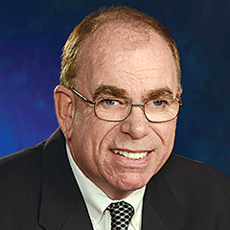

Much has improved since I began covering this field in 1990. Care capabilities have improved tremendously. Quality is no longer an afterthought. Operators have more data- and business-savvy than ever.
But, sadly, one discomforting reality remains. And if anything, it’s gotten worse. Simply put, far too many operators in this field keep getting into fiscal trouble.
To be fair, systemic flaws are at least partly to blame. For any way you slice it, providers must compete in an environment often beset by unrealistic oversight demands, dubious payment opportunities and unrealistic outcome expectations. On the best of days, this is a tough field to be in.
But there’s a deeper issue at play here. It’s one most in the field are loath to admit to, much less discuss: greed gone bad. This issue manifests itself in many ways. They include coding irregularities, bills for services never delivered, intentionally short-staffing, cheating workers out of earned wages, to name but a few. The list goes on.
Why have greed-driven problems continued, decade after decade? Because operators must simultaneously do two things that are often at odds. The first is to provide residents with the best level of care possible. The second (with the exception of nonprofits, many of which play their own fiscal reindeer games) is to maximize profits.
Most long-term care businesses are either family owned or publicly traded. In each case, a return on the investment is expected. The higher, the better. That is not by and of itself a bad thing. In fact, it is the way most businesses are run.
But it’s too often the case in our field that care or profit must be sacrificed so the other can improve. And when it’s care that gets shortchanged, a lot of bad things can and do happen.
If only there were a model that could lend a hand to this perennial challenge? Well, as it happens, there might be. And it comes from the financial sector, of all places.
Ever hear of the Vanguard Group?
The Malvern, PA-based investment firm now has more than $6 trillion in global assets under management. It has become the world’s largest mutual funds provider, and the second largest provider of exchange-traded funds.
When the late Jack Bogle founded Vanguard in 1975, he put an unusual structure in place. He made it a client-owned enterprise that would be run at cost. His aim was to charge only the minimum fees needed to cover operational expenses.
Because Vanguard is not under pressure to generate profit for its owners, it enjoys both a performance and cost advantage over competitors who are. That is to say, all of them.
To be clear, running an investment firm is very different than running a long-term care facility. But surely, there is enough brain power in this sector to figure out how Vanguard’s approach could be adapted.
Do I expect such a thing will be happening any time soon? Probably not. It’s the rare operator who would be willing to embrace a client-owned strategy.
But imagine if this new approach took hold — and expanded on a large scale. It would certainly reduce the number of reports we keep reading about fraud and other fiscal abuses in this sector.
As an added bonus, it might also encourage others with larceny in their hearts to seek their fortunes elsewhere.
John O’Connor is Editorial Director for McKnight’s.




